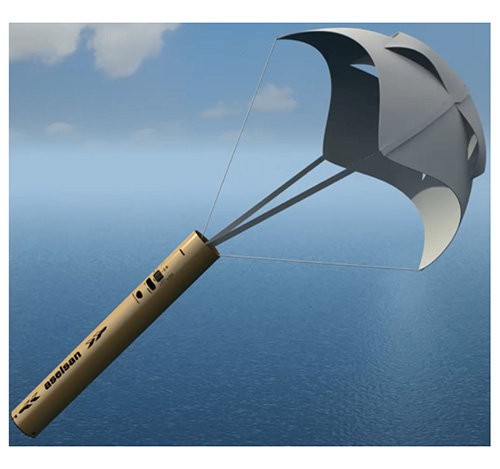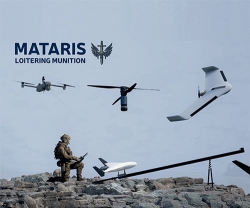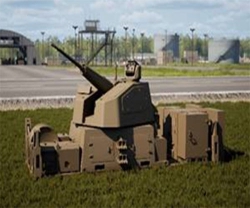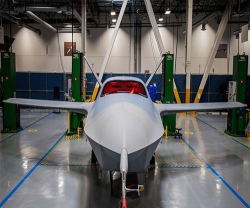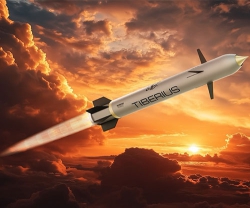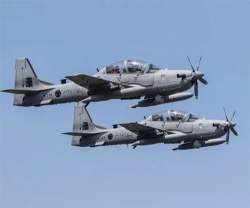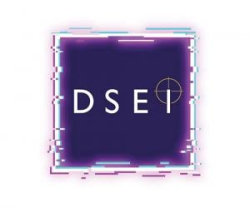Since beginning to work on underwater acoustic systems in 2006, ASELSAN has made significant investments in this area, developing various national systems such as the HIZIR Torpedo Countermeasure System for Surface Ships, the ZARGANA Submarine Torpedo Countermeasure System, the ZOKA Decoy Family, the KULAÇ Echosounder System, and the ASİST Intercept Sonar System. As one of the latest steps in its underwater acoustics road map, ASELSAN kicked off a self-financed development project and started working on developing the first national sonobuoy in late 2015.
Used for various purposes like anti-submarine warfare, search and rescue and underwater acoustic research, sonobuoys are expendable sonar systems that can be dropped or launched from aircrafts and surface ships alike. Initially developed during World War II in order to detect submarine threats from the air, sonobuoys effectively combine radio communication and underwater acoustic domains, emerging as cost-effective underwater target detection systems for aircrafts.
Sonobuoys comprise of a payload, i.e. a passive/active acoustic sensor or a special purpose sensor, a cable, suspension and damping structures, a power unit and a receiver/transmitter integrated into an inflatable surface float. Present-day sonobuoys are generally classified into three categories: passive, active and special purpose sonobuoys.
Passive sonobuoys are expendable passive sonars. Once deployed underwater, a passive sonobuoy listens to the environment and relays the acoustic data gathered over a radio link to the launching platform, usually an aircraft. Passive sonobuoys can listen to many different types of noise including submarine or surface ship propeller (cavitation) noise and emergency pinger tones.
Active sonobuoys are expendable active sonars that can transmit acoustic signals at various frequencies and pulse shapes and listen to the echoes of said acoustic transmissions. Active sonobuoys can be used as active sonars for detection on their own, as well as the source in a bi-static or multi-static sonar operation with other passive sonar systems. In bi-static and multi-static sonar operations, sonar pulses are transmitted from an active source, while passive sensors and/or arrays situated elsewhere listen to the echoes of these pulses. The sensors used for listening can either be passive sonobuoys or more complex structures, such as towed passive sonar arrays.
Special purpose sonobuoys are specialized devices used for collecting scientific data, such as temperature and salinity changes with respect to depth, or for performing search and rescue missions.
ASELBUOY is a NATO A-size, passive directional sonobuoy of DIFAR type, the most widely used sonobuoy type in the world. Developed by ASELSAN to be dropped/ejected from aircrafts and surface ships alike, ASELBUOY uses its DIFAR (DIrectional Frequency And Recording) sensor to listen to the underwater environment and sends the information gathered in real-time to the aircraft or surface ship via a VHF radio communication link. Operating time, operating depth and VHF communication channel can be programmed from the user interface on ASELBUOY prior to launch. Operating time and VHF communication channel can also be changed after deployment with remote commands over a radio downlink. At the end of its operating time, ASELBUOY terminates its radio transmission and scuttles.
ASELBUOY can be used for detection purposes in anti-submarine warfare, especially by aircrafts. When deployed in water in large numbers, ASELBUOY can also be used for localization by triangulation.
Designed and verified by ASELSAN, the DIFAR sensor acts as a two-dimensional vector sensor to provide acoustic information in the 5-2400Hz frequency band and bearing, enabling localization with multi-sensor processing. The DIFAR sensor consists of two orthogonal mechanical accelerometers and an omni-directional hydrophone. The accelerometers and integrated magnetic compass provide bearing information with respect to the magnetic North, thus granting ASELBUOY localization capabilities besides detection.
All components of ASELBUOY, including the acoustic DIFAR sensor and underwater cable, have been designed by ASELSAN. During the design process, ASELSAN has particularly focused on enabling the domestic production of each sub-component of ASELBUOY.
During design verification, ASELSAN has performed numerous lab, wind tunnel, acoustic tank, pond, and sea tests that have provided valuable feedback and helped ASELBUOY to mature into a product to be deployed from surface platforms. Once activated in water, ASELBUOY inflates its float and deploys with its DIFAR sensor at the desired depth using its cable and suspension structures. After deployment, acoustic and bearing data gathered by the DIFAR sensor is frequency modulated and relayed to the launching platform over one of the desired standard sonobuoy VHF channels. A sonobuoy receiver stationed on the surface platform can then pick up the data transmitted by ASELBUOY for processing.
In the near future, ASELSAN plans to move onto system verification phase after completing field tests, where ASELBUOYs will be dropped from aircrafts. Following system verification, ASELSAN aims to finish its self-financed Passive Sonobuoy Development Project by having rendered ASELBUOY ready for mass production.
With the passive ASELBUOY, ASELSAN is nearing completion of its efforts to provide Turkey with the first member of its national sonobuoy product family. Preliminary design work has also been initiated for the development of an active sonobuoy as well as an integrated sonobuoy receiver and signal processor to be used in sonobuoy-launching air or surface platforms. Along with the receiver and signal processor unit, passive and active sonobuoys will enable bi-static and multi-static sonar operations with ASELSAN’s HIZIR system.

